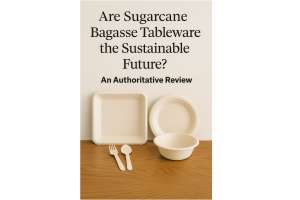Risk assessment tools have become a cornerstone of modern clinical practice. From pressure ulcer prevention to falls risk identification, structured assessment frameworks are now embedded into hospital workflows, care home protocols, and national healthcare guidelines. But one critical question continues to surface: can risk assessment tools replace clinical judgement?
With digital platforms like Velappity streamlining clinical assessments across care environments, healthcare professionals now have faster access to patient records, risk scores, and automated decision-support features. These tools undoubtedly enhance efficiency—but can they fully substitute a clinician’s nuanced understanding, especially in complex cases?
Understanding the Role of Risk Assessment Tools
Assessment tools such as the Waterlow score, the Downton Fall Risk Assessment, and the STRATIFY tool have been widely used for decades. These instruments offer a standardised way to assess key risk factors and generate a risk score. For example, in pressure ulcer risk management, tools guide nurses in evaluating mobility, skin condition, and nutrition.
Similarly, in predicting falls, falls risk assessment tools help clinicians evaluate factors like wandering behaviour, cognitive decline, and history of falls. The goal is clear: ensure appropriate interventions are applied and at-risk patients are identified correctly compared to those with lower risk.
However, these tools are just one part of the puzzle.
The Importance of Clinical Judgement
Clinical judgement—or clinical judgment, in some contexts—is rooted in observation, experience, and contextual awareness. It is the ability of healthcare professionals to make decisions based on a mix of patient-specific data, professional knowledge, and an understanding of clinical subtleties that aren’t always captured in standardised tools.
For instance, while falls risk identification tools may flag an older patient as low-risk, a clinician may observe subtle gait instability or signs of acute illness not recorded in the tool. Clinical observation like this often goes beyond tick-box assessments, highlighting the value of using both structured tools and professional insight together.
What the Research Says
Several studies have examined whether tools outperform—or fall short of—human judgement. A prospective observational study in a geriatric rehabilitation hospital showed that while tools like Downton and STRATIFY were helpful, they often had lower predictive accuracy than clinical observation alone. Importantly, tools missed a proportion of medically stable patients who later experienced falls or pressure ulcers.
Similarly, blinded end point evaluation of risk scores versus clinician-led decision making in East Bournemouth and at Medicine Castle Lane revealed a key conclusion: fewer patients were correctly identified by tools alone compared to those assessed using the clinician’s own clinical judgement.
The study showed that when nurses applied tools without critical reflection, outcomes were significantly worse. Relying solely on scores and guidelines without integrating personal assessment and patient context undermined the goal of improved care.
The Limits of Tools
Assessment tools are, by nature, generalised. They’re built using data from large samples and statistical models, but not every patient fits neatly into those assumptions. Predictive accuracy, while useful, does not equal certainty. Risk factors interact in complex ways—especially in older people or those with multiple comorbidities.
Furthermore, some tools lack sensitivity, implying that patients who may need urgent interventions are overlooked. Others may generate false positives, leading to unnecessary interventions or over-cautious care plans.
This is particularly relevant in pressure ulcer risk and falls prevention, where the presence of one overlooked factor—like new medication side effects—can drastically change a patient's risk status.
Where Tools Excel
Despite these limitations, risk assessment tools are essential. They:
-
Create consistency in assessment
-
Help less experienced staff follow best practice
-
Provide a framework for documenting observations
-
Improve access to data and assessment results across teams
-
Enable colour code-based alerts and workflow automation
-
Reduce reliance on memory or incomplete knowledge
In environments like rehabilitation wards, where multiple staff are involved in daily living assistance and monitoring, tools act as a shared reference point. They also support compliance and governance, ensuring documentation aligns with guidelines.
With platforms such as Velappity, risk assessments can be completed on mobile devices, supported by real-time data and automated reporting. This eliminates the need to proceed straight from memory or paper records, improving workflow and accuracy.
Clinical Decision Making in Context
Clinical decision making is not a binary process. It’s not a choice between the tool or the clinician—it’s a process that should integrate both. Tools support, but should not replace, critical thinking. The best outcomes occur when assessment tools inform but do not override professional judgement.
For example, if a Downton score suggests a patient is low-risk, but the nurse observes confusion or instability, the decision should reflect both the tool and real-world behaviour.
In this context, tools enhance clinical judgement, offering a structured base upon which nuanced, patient-centred decisions can be made.
Enhancing the Future of Risk Assessments
New technologies—particularly digital platforms with machine learning capabilities—offer a more dynamic future for assessment tools. These systems learn from clinical data, patient outcomes, and even symptoms recorded over time to generate data-driven insights with higher accuracy.
In the right hands, these tools enable better decision making, improved outcomes, and more appropriate interventions. They also allow healthcare professionals to focus on patient care by reducing the administrative burden involved in risk assessments, documentation, and compliance.
As integration between clinical systems and digital assessment tools improves, future research will likely show that the combination of professional insight and structured assessment provides the most effective route forward.
Conclusion
So—can risk assessment tools replace clinical judgement? The answer is a clear no. But they can enhance it.
Assessment tools are essential for standardisation, compliance, and guidance. But they must be balanced with experience, observation, and critical thinking—especially in complex cases or among older people with varied health profiles.
Tools are most valuable when used by professionals who understand their limitations, interpret risk scores wisely, and integrate these findings with real-time clinical observations.
Ultimately, ensuring patients are identified correctly, supported by appropriate interventions, and assessed with both science and skill will always require human judgement—guided, but not replaced, by tools.






